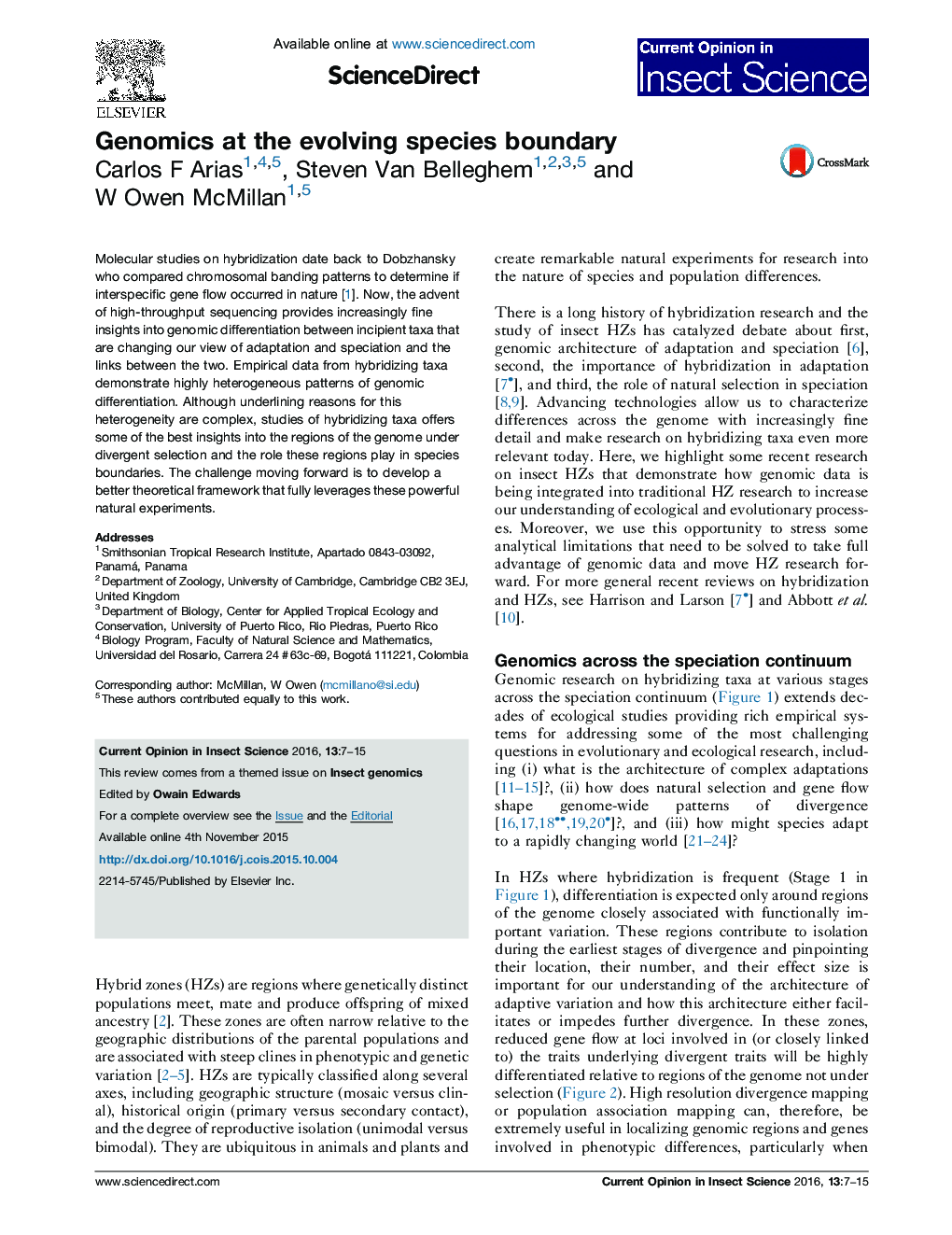| Article ID | Journal | Published Year | Pages | File Type |
|---|---|---|---|---|
| 4508193 | Current Opinion in Insect Science | 2016 | 9 Pages |
•Hybridizing taxa show highly heterogeneous patterns of genomic differentiation.•Genomic heterogeneity reflects the interplay of a number of evolutionary forces.•Population association mapping can help identify functionally important variation.•Species boundaries are porous and hybridization is important in adaptation.•New analytical methods that use all the information in genomic datasets are required.
Molecular studies on hybridization date back to Dobzhansky who compared chromosomal banding patterns to determine if interspecific gene flow occurred in nature [1]. Now, the advent of high-throughput sequencing provides increasingly fine insights into genomic differentiation between incipient taxa that are changing our view of adaptation and speciation and the links between the two. Empirical data from hybridizing taxa demonstrate highly heterogeneous patterns of genomic differentiation. Although underlining reasons for this heterogeneity are complex, studies of hybridizing taxa offers some of the best insights into the regions of the genome under divergent selection and the role these regions play in species boundaries. The challenge moving forward is to develop a better theoretical framework that fully leverages these powerful natural experiments.
